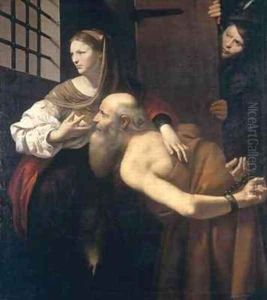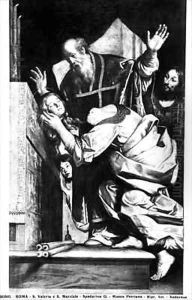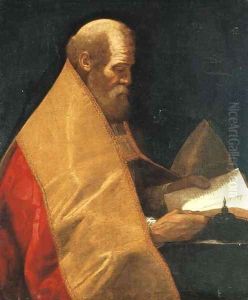Giovanni Antonio (Lo Spadarino) Galli Paintings
Giovanni Antonio Galli, also known as Lo Spadarino, was an Italian painter born in 1585 in Rome. He is known for his contributions to the Baroque period, a time characterized by dramatic expression, rich colors, and intense light and shadow contrasts. Galli's nickname, 'Lo Spadarino', which translates to 'the little swordsman', distinguishes him in the historical records, though the origin of this nickname is not entirely clear and may refer to a family trait, a personal habit, or an aspect of his artistic style.
Galli's artistic journey was deeply influenced by the vibrant cultural and artistic environment of Rome during the late 16th and early 17th centuries. He was part of a generation that witnessed the transition from the Mannerist style, which emphasized artificiality and elegance, to the more emotionally charged and naturalistic Baroque style. Although the details of his training are not well-documented, it is believed that he was exposed to the works of Caravaggio and his followers, which had a profound impact on his development as an artist. Galli's own works often reflect the Caravaggesque influence, particularly in his use of chiaroscuro and his choice of religious and mythological subjects.
Throughout his career, Galli focused primarily on religious themes, producing numerous altarpieces, frescoes, and smaller devotional paintings. His compositions are noted for their emotional intensity, attention to detail, and the dramatic use of light. One of his most celebrated works is the 'Ecce Homo', a poignant depiction of Christ presented to the people before his crucifixion. This painting exemplifies Galli's skill in portraying human emotion and his mastery of light and shadow to enhance the narrative impact of his scenes.
Despite his talents and contributions to the Baroque movement, Galli did not achieve the same level of fame as some of his contemporaries. His work was, for the most part, confined to Rome and its surrounding areas, limiting his exposure to a wider audience. Nevertheless, his paintings are appreciated for their devotional intensity and technical proficiency.
Giovanni Antonio Galli, Lo Spadarino, died in 1651 in Rome. His legacy, though not as well-known as that of his more famous contemporaries, remains significant for the study of Baroque art. His works continue to be studied for their emotional depth, technical skill, and as examples of the Caravaggesque influence in early 17th-century Roman art.


